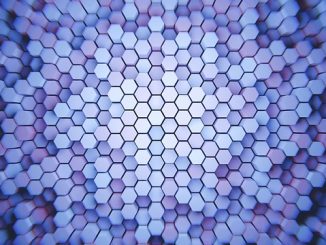
Ever since we discovered how to use it, fossil fuel has been the world’s primary source of energy. Unfortunately, oil isn’t just expensive and difficult to find, it’s one of the main drivers of global warming too. Which is why researchers have been striving to find alternative energy sources.
One of the most promising alternative energy sources is solar power which can be turned into solar fuel by combining sunlight, water and carbon dioxide. Every molecule of water is composed of one oxygen atom and two hydrogen atoms, hence the chemical symbol H2O. By using sunlight as energy, hydrogen atoms are separated from the oxygen atom, then combined with CO2 to produce hydrocarbon fuel.
The concept of solar fuel creation seems easy enough to apply, especially when your motivation is generating an unlimited supply of clean energy. What complicates the situation is, sunlight alone isn’t enough to break down water molecules — the assistance of a catalyst to kickoff the process is needed. This is where photoanodes come in.
Photoanodes are materials that absorb the sun’s visible light, then use this energy to split water molecules and rearrange its atoms to form fuel. This capability isn’t common and over the past 40 years, scientists have only been able to identify 16 photoanode materials.
With the new method developed by a team of researchers led by John Gregoire of the California Institute of Technology, together with Jeffrey Neaton and Qimin Yan of the Department of Energy’s Lawrence Berkeley National Lab, the process of identifying photoanodes has been made faster and easier. And after just 2 years, they have found 12 new photoanodes that can be used for solar fuel generation.
The new system, which the team describes as a high-throughput method, combines theory, computation and experimentation. They began the process by searching for potential candidates in a materials database. Next, they performed theoretical calculations using supercomputers to narrow down the list. Then, they set out to test the final list — subjecting them to different conditions and checking each of them for anode activity by using high-throughput experimentation.
The team explored a total of 174 vanadates, meaning, compounds that contain vanadium, oxygen, plus one other element from the periodic table. What they found was that changing the third element resulted in different materials with different properties. Even better, they discovered how to manipulate those properties so they could make better photoanodes.
As Neaton said in a statement: “What is particularly significant about this study, which combines experiment and theory, is that in addition to identifying several new compounds for solar fuel applications, we were also able to learn something new about the underlying electronic structure of the materials themselves.”
If the experiments prove to be successful, we can potentially be looking at the solution for the world’s energy problems. In terms of transportation, we can even be looking at a future where our roads and highways are no longer filled with conventional-powered vehicles, but by solar-powered vehicles.
The research has been published in the Proceedings of the National Academy of Sciences under the title “Solar fuels photoanode materials discovery by integrating high-throughput theory and experiment”.
- Bulenox: Get 45% to 91% OFF ... Use Discount Code: UNO
- Risk Our Money Not Yours | Get 50% to 90% OFF ... Use Discount Code: MMBVBKSM
Disclaimer: This page contains affiliate links. If you choose to make a purchase after clicking a link, we may receive a commission at no additional cost to you. Thank you for your support!




Leave a Reply